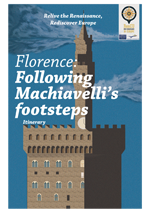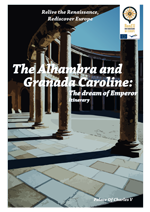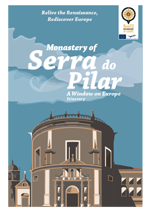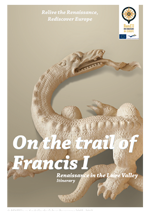Harmony and Conflict
After World War II and even more after the end of the Cold War, European citizens in general are aware that they do not live in a time of harmony but of profound conflict - economical, cultural and religious. They frequently tend to exorcise this awareness by excluding that it can take any truly violent form, to the point of ignoring the very possibility of a war on European soil. In recent years, however, this conviction has begun to waver, as we are obliged to acknowledge that violent conflict and war in the heart of Europe is by no means inconceivable.
Investigating the complex relationship between harmony and conflict in the Renaissance can lead us to reflect in detached, lucid manner on the latent conflicts that lie hidden behind our current facade of peaceful accord. The age of the Renaissance, in fact, cannot be seen merely as a time of harmony, vast intellectual progress, the rediscovery of great Latin and Greek authors, the discovery of new lands (both terrestrial and celestial) and the production of splendid works of art. The Renaissance was of course all this, but it was also an age of crisis, of religious, political and cultural conflicts that often erupted in violent military clashes with enormous social repercussions. It was in many respects a tragic epoch, where harmony was only the other side of conflict.
Related itineraries
![]() Following Machiavelli’s footsteps
Following Machiavelli’s footsteps

The itinerary "In the Footsteps of Machiavelli" offers continuous occasions for reflection on the relationship between harmony and conflict in both internal politics, with the struggles between the Republic and the Medicean regime and their respective factions, and in international politics, with the wars in Italy that also involved King Francis I and Emperor Charles V. In examining the Bargello Museum and Piazza della Signoria, we are invited to reflect on the importance of war to Machiavelli and on the great literary and political works that can be created in relation to such conflict. Conflict, in fact, gives rise to reflections on politics, but also such works as the "Mandragola" and the "Istorie fiorentine", whose purpose is that of transforming into harmony the conflict between the Medici and a republican like Machiavelli.
![]() The Alhambra and Granada Caroline: the dream of Emperor
The Alhambra and Granada Caroline: the dream of Emperor

In following the Alhambra itinerary, we become aware of the central nature of the sphere of conflict, and the attempt, for the most part successful, to restore harmony. In the Alhambra we find, in fact, an ongoing dialogue among Islamic artistic and architectural styles and those of the Christian culture. The populations of Islamic religion had only recently been driven out of the Spanish territory, but attempts to reabsorb the most attractive elements of their culture in a dimension acceptable to a Catholic society were not lacking. The assimilation did not concern Islamic culture alone, but also some formerly Islamic family groups actively utilized in the war against their own kinsmen. The Alhambra constitutes in itself a continuous reference to the problems of today, and most notably to the need for a synthesis, which should be peaceful, between different cultures.
![]() Monastery of Serra do Pilar: a window on Europe
Monastery of Serra do Pilar: a window on Europe

The relationship between harmony and conflict is a major factor also in the itinerary devoted to the Monastery of Serra do Pilar. Here we are invited to reflect on the impact of the Lutheran reform, which had dared to question the monopoly of the Church in interpreting the religious texts, and had been at the origin of the wars of religion, arguably the most important "conflict" of the Renaissance.

The France of King Francis I was torn by powerful conflicts, which also led to economic and cultural growth, and hence to new forms of harmony. The Italian wars had in fact caused severe financial problems to the administration of Francis I, who was obliged to turn to private individuals who engaged in financial activity. This new upper middle class, which also acquired titles of nobility, became increasingly important in the life of France, occupying primary positions in the State; nonetheless, it continued to be looked down upon by the ancient nobility, which did not fail to proclaim the comparatively humble origins of the new leaders.